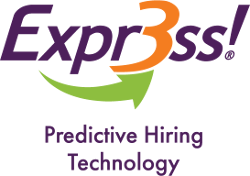
The onboarding phase of an employee’s journey is extremely important. After spending time, money and energy finding the right candidate for the role, the onboarding process is a major contributor to ensuring that the new hire actually sticks around.
Research shows that 59% of Australian managers have had a new hire resign during their probation period due to a poor onboarding experience, with 43% leaving the company within the first month! These statistics highlight the need to spend time with new recruits in order to get them settled in and engaged within the organisation but, how can this be achieved when onboarding remotely?
Ensuring that new employees are truly welcomed, set up and comfortable within their new role can be tricky at the best of times, however onboarding remotely often comes with its own unique set of hurdles. With a pandemic induced global shift towards remote and hybrid work models, knowing how to overcome these challenges is essential to ensure your new hires are set up for success before walking through the door (to their home office!).
Below are some of the remote onboarding essentials that we love, so much so that we employ them ourselves here at Expr3ss!
Before the new hire’s start date
Entering a new company and not knowing the ins and outs of the workplace as a new employee is always daunting. The additional stress of having to navigate this “on your own” remotely from your home office increases those first-day nerves exponentially.
It is extremely important to demonstrate to your new remote hire that they will be completely supported throughout the process, even before their first day has arrived. How can this be achieved, you ask? Let’s discuss set-up logistics.
1. Streamline your onboarding documentation process
Receiving employee contracts and other legal documents, printing, signing and sending them back to you can be time consuming for your new remote hire. Consider implementing an online onboarding process where applicants can fill out the necessary forms and add their signatures electronically and securely to avoid wasting time (and paper!).
Not only will this streamline your onboarding process as all documents are held securely in one location, it also speeds up the document processing time.
The added benefit of streamlining your onboarding process via an online platform is that it will help to enhance the perceptions that your new hire is already beginning to form about what it will be like to work for your company. The commencement of onboarding documentation is often the first port of call for any onboarding process, and first impressions count!
If your new hire is faced with a disorganised and confusing process before they even start in their role, it may plant a seed of doubt in their mind as to whether this was the right career path for them.

2. Ensure all equipment and resources are set up and ready for their first day
So that your new hire can hit the ground running on their first day, send out all their required tech and equipment prior to their start date. Pro tip: have the IT department grant access to all necessary accounts on their devices so that your new hire is logged in and ready to go on their first day.
New hire nerves are normal and expected, but demonstrating that you are prepared and excited for your new hire’s arrival is a surefire way of reducing new job anxiety!
3. Welcome with EXCITEMENT
The time in between the job offer and start date is all about impression management. You want your new hire to feel welcomed and certain in their decision to accept the role. Without a physical work environment, the opportunity to generate connections with the team doesn’t happen organically.
As such, extra efforts need to be made to foster a new hire’s working relationships and engagement with the company and the culture. In a normal office environment, the team would probably welcome a new member with a team lunch and a little goodie dropped on their desk. Having a remote employee jump on board calls for creativity.
Encourage the team that will work with the new hire to connect on LinkedIn ahead of them starting. This helps them get to know their colleagues well ahead and even start the conversations that will help alleviate any nervousness around becoming part of a new and unfamiliar team.
To welcome your new remote hire with excitement, why not add a little something extra in their equipment delivery to let them know that you are eager to have them. Consider company branded merchandise that they can use in their home office to remind them that they are a part of something bigger – think pens, notebooks, keep cups, jumpers, and items that include them in the company culture (i.e. every Expr3ss! employee has a “YES!” button to celebrate wins). Amp up the excitement and anticipation for their first day by leaving a note on their welcome package that says “DO NOT OPEN UNTIL YOUR FIRST DAY!”.
Once your new hire starts:
4. Build connections straight away and create regular and comfortable lines of communication
The ongoing challenge once your new hire has started is how to immerse them into the organisational culture and ensure that they are adequately socialised, supported and engaged within their team, role and the company. This is often where businesses miss the mark when it comes to onboarding successfully, as there is a misconception that once the new hire has met everyone, onboarding is complete.
The overuse of technology and a decrease in physical social interaction both contribute to increased feelings of isolation and loneliness at work, which in turn has been linked to lower engagement and job satisfaction. As such, extra effort is required when onboarding remotely to ensure the success and wellbeing of your new hire.
A detailed culture immersion program can make the new employee feel as though they are not alone and that they are a valued member of your team – not to mention it will help to build connections quickly and for the new employee to learn their roles and responsibilities accurately.

Related Article
What is workplace culture and why should you take it seriously?
Wellbeing Lab 2020 Workplace Report shows how employees feeling lonely at work relates to lower engagement and job satisfaction. Having a buddy can tackle feelings of loneliness and confusion. Buddy systems are a great way to provide social support to your new remote hires.
Assigning dedicated virtual buddies to your new hire can help ensure that they do not feel alone in their new role and that they are a valued member of your team. Think of your buddy system as an intricate way of promoting knowledge sharing amongst your staff.
To further improve the buddy system approach, consider assigning a different buddy for each area of your new hire’s role. For example, a “culture buddy” can help your new hire navigate the status quo, whereas a “role buddy” will help them while they learn the ropes and answer their day to day questions.
Whilst documentation and set-up logistics are formal aspects of the onboarding process, a major component of onboarding involves socialisation. This is often where businesses miss the mark when it comes to onboarding successfully.
Socialisation involves the new hire becoming familiar with their colleagues and becoming immersed into the organisational culture. Therefore, once your new remote hire has been welcomed enthusiastically, the next most important step is their first introduction to the team. This is the moment where they will start building their working relationships.
5. Comprehensive first week itinerary and 30/60/90 Plan
Have you ever started a new role and been sitting at your desk, awkwardly looking at a screen for what feels like hours and not knowing what else to do except for having a look at the company’s intranet? All of a sudden, a pop-up reminder comes up on your screen: “Meeting with James Smith at Meeting Room B202.” Stress-mode kicks in: “Who is James? What’s his role? What are we talking about? Where is this room?”. I wonder what this person had to say about their first day at work. Now imagine this in a remote working environment. Double stress!
Starting a new job can be overwhelming and nerve racking. Let’s change the game! There are support mechanisms that organisations can use to make that transition a little bit more comfortable. Uncertainty is one of the reasons why new employees feel stressed when jumping into a new role.
It doesn’t matter how much research they do about the company and the people they will be working with, or the number of questions they have asked during interviews. There is always a big fat question mark on everyone’s first day. Now, what about making that question mark as small as we can?
Let’s give our new employee as much information as we can before they even show up on Day 1. Let’s tell them what their first few weeks will be all about, what the expectations are for the first 30, 60 and 90 days.

The first day is an employee’s first important milestone within their time with a company. So is completing the first week. Being ready for them will allow you to offer a positive experience and make them feel special (because they are, indeed, very special and they were not easy to find!)
The first day is an employee’s first important milestone within their time with a company. So is completing the first week. Being ready for them will allow you to offer a positive experience and make them feel special (because they are, indeed, very special and they were not easy to find!).
The power of connections and first impressions is in your hands. Ensuring a full schedule for your new employee’s first days or weeks will help eliminate any feelings of uncertainty as they will know exactly what to expect.
How good would it be to have a detailed schedule of who you are meeting with, an advanced understanding of their role, what is likely to be discussed with them including the link to click to jump straight into your virtual meet?
By building transparency around their learning objectives and having specific SMART goals, your new starter will know exactly what to expect and exactly what is expected of them. Having a good discussion on the 30/60/90 Plan on the first day will give your new employee the opportunity to ask questions and concerns.
However, it is important to give them more opportunities to go through the plan again after a few weeks. By the time you regroup, they will have a better understanding of what the targets mean and what support they have to grow into their role.
6. Regular and comfortable lines of communication

Related Article
- Regular video calls and check-ins to answer any questions is key.
Once your new hire has started, the ongoing challenge from then on out is how to immerse them into the organisational culture and ensure that they are adequately socialised, supported and engaged within their team, role and the company. Isolation and loneliness is a common occurrence for remote workers – make the effort to foster colleague connections to ensure engagement and interconnectedness.
Remember, onboarding is the period in which new hires are welcomed into the company, complete any outstanding employment documentation, are provided their relevant work space and tools and familiarise themselves with their role and company policies and procedures.
However, it should not stop there. Whilst the documentation side of onboarding is the formal aspect of the process, a major component of onboarding involves facilitating communication and socialisation. Make sure you find ways to quickly immerse your new hire into the team, the organisational culture to allow them to quickly become productive.
